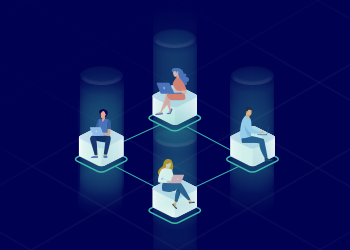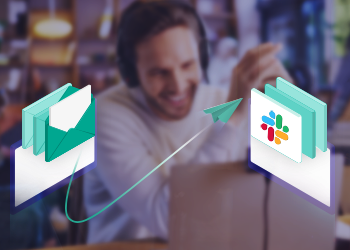
June 20, 2023
Artificial Intelligence has made a splashy impact in 2023 – and for good reason. With all this exciting (and somewhat terrifying), technology at our fingertips, we appear to be transitioning beyond the Information Age into unchartered territory.
Perhaps unsurprisingly, it’s all rather speculative, and no one really knows what this means just yet – although according to this former Google software engineer, we are living in the Age of Reckoning (make of that what you will).
What we do know is that businesses are doubling-down on automation, streamlining processes and using Artificial Intelligence to speed up workflows to make employees and companies more efficient and profitable.
While technology has had an overall net positive impact on businesses through more efficient sharing and storage of information, improved communication, and general time saving, there is also now a much higher level of cognitive strain for employees tasked with using multiple business apps on a daily basis.
Man versus machine
Humans have limited cognitive abilities. And although AI hasn’t attained the somewhat slippery concept of “singularity” yet (the tipping point where Artificial General Intelligence (AGI) is on par with humans), according to Translated, it could also be as little as seven years away.
With the vast amount of so-called productivity tools available, toggling between multiple messaging and business apps – and dealing with a myriad of other work-related distractions – is taking its toll. It turns out that technology (when wielded poorly) is actually having a negative impact on productivity.
The real cost of context switching
A study published by Harvard Business Review highlights the significant amount of time that employees now spend switching between applications which is leading to workflow inefficiency and cognitive strain.
On average, users toggled between different apps and websites nearly 1,200 times per day, resulting in almost four hours per week spent reorienting themselves. This is the equivalent to five working weeks, or 9% of an employee’s annual time at work.
The constant refocusing that’s required, combined with fragmented attention, is a result of poor work design and an abundance of applications.
A 2021 Workgeist Report also examined the impact of toggling between apps on employee productivity. Unsurprisingly, it found that six out of 10 people said it was difficult to keep track of information flowing through different apps.
Compared to the Harvard Business Review findings, Workgeist uncovered that on a typical workday, people spend 59 minutes – or around five hours a week – just trying to find what is needed.
Fragmented information
Depending on the organization, knowledge may be stored in different places. Although most employees will have access to shared drives and company-wide information appropriate to their job function, according to Workgeist, 54% of people still feel that software tools actually make it harder to find information.
In other words, finding what is required to carry out daily tasks is a task itself. In this same study, seven out of 10 people confirmed that finding the information they needed just to do their job was time-consuming and that they can spend up to 20% of their standard workday doing this.
Employees are going rogue
It’s not uncommon to find different teams using different tools, which leads to those dreaded silos. A good example is where an IT department may prefer to use Slack for their messaging requirements (e.g. for managing incidents or bugs), while other departments use Microsoft Teams.
Another example is when Customer Service teams may be collecting valuable feedback from customers in one app, which often has limited visibility for people in other departments, (e.g. a Product team). While it’s logical that restricting access to data can have an impact in other areas of the business, employees don’t always use the tools they are asked to use either.
According to Workgeist, 63% reported that they didn’t use recommended tools and 55% said it was time-consuming getting information from another department – especially when it came to using apps they were not familiar with.
AI for messaging and productivity
One of Conclude’s aims is to help break down information silos by structuring messages and bringing Support and IT Help Desk incidents, issues and tickets into Slack.
While the company is still developing a robust offering (keep an eye on our blog for more), there is already a lot of potential for teams to help minimize context switching.
Download our white paper on AI for Support Tickets and Incident Management for more information.


